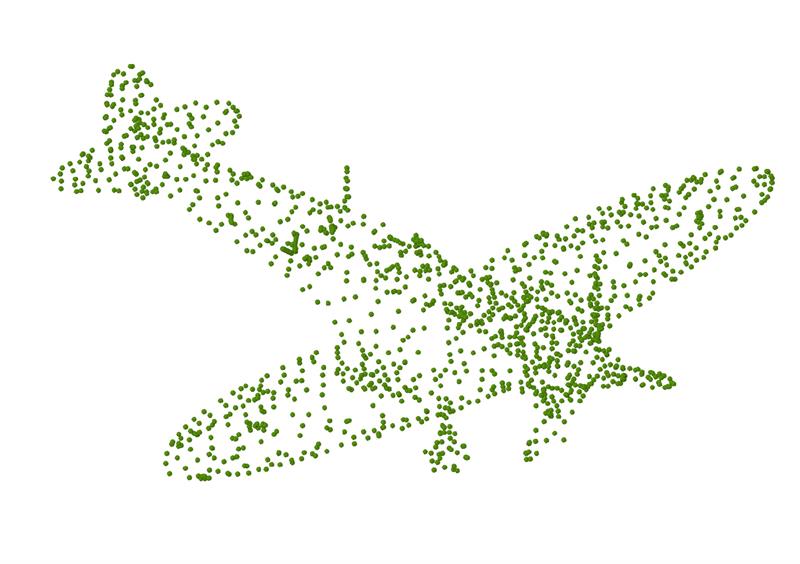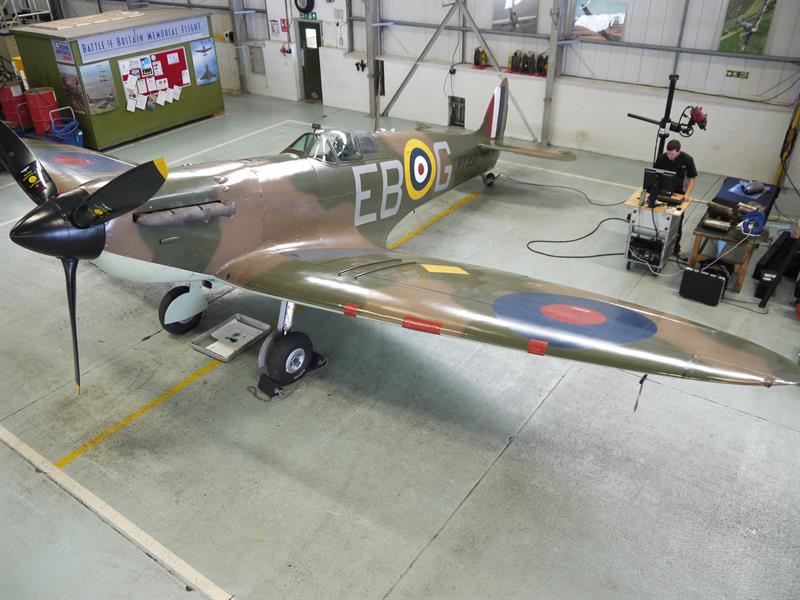It is perhaps the most iconic British design engineering icon of the last century. The Spitfire is hailed as a marvel, a saviour and king of the skies. It draws attention from all walks of life, turns heads and continues to be a household name 80 years on from getting off the drawing board.
You’d imagine then, it’s a pretty big responsibility if you are asked to work with one of the few remaining flying, to capture its uniqueness for the digital archive. Woking based Physical Digital specialise in taking physical things and making them a digital representation.
Managing director Tim Rapley, is no stranger to working alongside iconic names in engineering, having previously been at McLaren, and even having Barns Wallace’s nephew as his design and technology teacher.
“We got every rivet head, every repair, and every aero-surface so we could understand the geometry of the whole aircraft,” he said. “I didn’t realise how much of it was not aluminium, and how much is actually cloth and structure, that amazed me. There is no cockpit floor either, it’s just spars and webs.”
 So how does the Spitfire compare under a modern engineer’s eye?
So how does the Spitfire compare under a modern engineer’s eye?
“The detail of engineering and riveting is phenomenal,” he continued. “To think they were making one every 24 hours in war time – you think how long it takes to restore one of these planes now?! The engineer inside me was in awe of how they productionised it. The build quality and tolerances are still so impressive.”
The Spitfire in question is part of the last remaining group of original WWII RAF aircraft and is part of The Battle of Britain Memorial Flight (BBMF) fleet based at RAF Coningsby in Lincolnshire is made up of other legendary aircraft including two Hawker Hurricanes and the UK's last flying Avro Lancaster.
The MkIIa Spitfire has the unique number P7530 and took part in the Battle of Britain. It is the oldest remaining flying Spitfire and over the course of the war, it was shot down three times, before being promptly repaired and send back in to battle.
The process
Physical Digital was appointed by Amalgam Fine Model Cars to create a highly accurate digital model of the MKIIa Spitfire. Amalgam has a long history of producing large models from luxury yachts to architectural developments to F1 cars, and now, a WWII fighter plane. Physical Digital applied a combination of processes over three days to gain all the necessary measurements needed to get the necessary digital information.
The first process was the TRITOP system, a photogrammetry technique that uses 5mm diameter coded and uncoded markers applied to the airframe and cockpit canopy. An SLR camera takes a series of 2D high resolution photos at various angles, that a computer is able to compile in to 3D map. This is then followed by the use of the ATOS system, which uses high resolution measuring cameras to precisely measure every surface on the aircraft.
The P7530 crashed three times during the and was placed in the highest category of crash before being labelled as uneconomical to repair, thought to be up to 60% of the airframe. But, if you go through a World War, at the front line, you are bound to come out with a few scars.
“We saw repairs where the tail fins had been shot and then subsequently repaired,” said Rapley. “That an original repair from late in the war.
“For our own interest, we did a full inspection report, so we did a symmetry plane down the middle and we flipped it, to look at one side against the other… and there were some anomalies. One of wings is slightly longer than the other. But that could be to do with the symmetry as the fuselage has got a slight banana in it, a slight bend (bow). And the tail fin is slightly twisted compared to the main wings.”
The BBMF flight team has its own separate hanger at RAF Coningsby that is open to the public. It is a working hanger where work is done on surviving aircraft from the era. Most of the guides are ex-ground crew, mechanics and even RAF pilots.
“The guys at the BBMF were really welcoming,” said Rapley. “They gave us great access and we could also sit in it. I’m over 6ft and 100kg and I could just about get in the cockpit. Sitting there was a very humbling experience. We were very privileged.
“We met some Lancaster guys and we thanked them for what they had done. They said, ‘thank the ones that didn’t come back.’ It puts it in to perspective.”
The data from the scans is collected and turned in to an STL file. This can then be turned in to a CAD data, though it wasn’t part of this project. The data was also supplied to the BBMF for their digital archive, as well as to Fine Model Cars, which went on to produce a very accurate model.
“To put your head inside and look at the Spitfire’s structure was awe-inspiring,” said Rapley. “It is British design icon.”

Fast Facts Role: Fighter / Photo-reconnaissance aircraft Manufacturer: Supermarine Designer: R. J. Mitchell, an engineer at Supermarine Aviation, designed the Spitfire originally to be a high performance, short range plane. First flight: 5 March 1936 Introduction: 4 August 1938 Retired: 1961 Produced: 1938–1948 Number built: 20,351 Weight: 2,400 kg Top speed: 582 kph Max Altitude: 7,000 m Wingspan: 11 m Length: 9.12 m Powerplant: 1 × Rolls-Royce Merlin 45 supercharged V12 engine (1,470 hp) Typical Armament: 8 × .303 in Browning Mk II machine guns |











